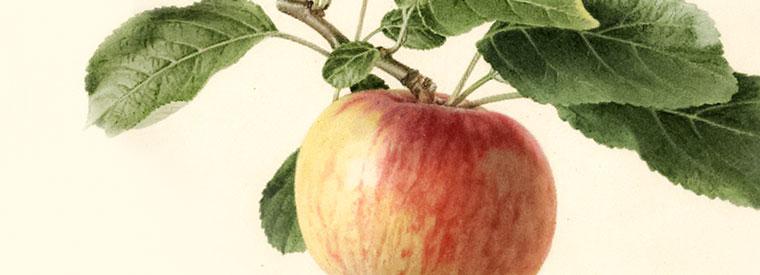Fine fruit is the most perfect union of the useful and the beautiful that the earth knows.

Fruit
NICKAJACK is also known as Aberdeen, Accidental, Alleghany, Berry, Big Hill, Buckman's Red, Carolina, Carolina Spice, Caroline, Chatham, Cheatan, Cheataw, Dahlonega, Edward's Forsythe's Seedling, Gowden, Gowdie, Graham's Red Warrior, Haward, Howard, Hubbard, Jackson Red, Leanham, Missouri Pippin, Missouri Red, Mobbs, Pound, Red Hazel, Red Pippin, Red Warrior, Rickman's Red, Ruckman, Summerour, Treanham, Walb, Wall, Wander, Winter Horse, Winter Rose, Wonder, World's Wonder, and numerous other names. It likely originated near Nickajack Creek, Macon County, North Carolina, and was recorded in 1853, but probably dates from the late 1700s. Medium to large in size and rectangular to truncate-conic in shape, the greenish-yellow skin is nearly covered with a flush, and streaks of orange-red to red, and dotted with prominent white lenticels. There is a light bloom. The dessert apple has creamy-white flesh with a tinge of green under the skin and is firm, coarse-grained and crisp, with a subacid to sweet flavor. It is noticeably aromatic. The large tree grows upright and spreading and is a prolific annual bearer on the clay soils of Central Virginia. Downing, the pomologist, wrote in 1878: "on branches two, three or four years old, there are woody knobs or warts of various sizes which, when cut from the branch, are found to contain kernels entirely detached from the regular grain of the wood." Nickajack, which will reproduce a likeness of itself from seed, stores particularly well and ripens in October.
Ripening Period
- Mid Fall - October


